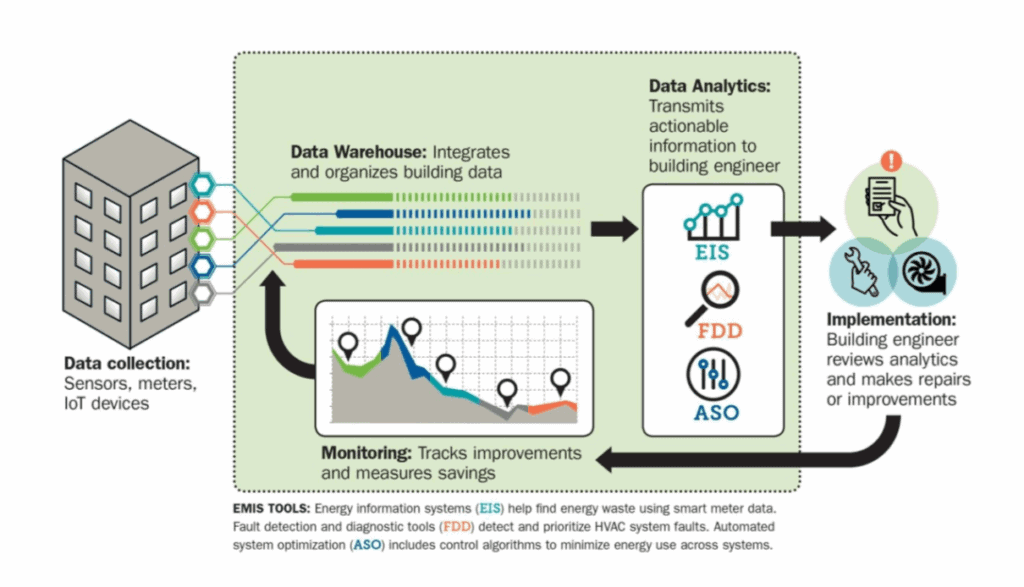Smart Building Systems Cut Energy Waste. AI Makes Them Even Smarter

Many commercial buildings in the United States waste energy needlessly and have significant opportunities to become more efficient. Properties ranging from hospitals, to retail stores, to hotels can cut their utility bills by installing building energy management and control systems (BEMCS) that optimize heating, cooling, and other energy systems and help building operators understand how energy is being used and how to improve performance.
Advances in technology, including the rise of artificial intelligence (AI), have made these systems even more effective in recent years. ACEEE examines BEMCS and their potential to optimize buildings’ energy use in three briefs published today:
- Unlocking Energy Savings Using Building Energy Management Control Systems
- The Use of Artificial Intelligence in Building Energy Management Control Systems
- Building Energy Management Control Systems for Small and Medium Commercial Buildings
What are building energy management and control systems?
BEMCS—sometimes called energy management systems or building management systems—use sensors, meters, and software to monitor and optimize how a building uses energy. They can automatically adjust heating, cooling, and lighting and can help operators find and fix inefficiencies in real time.
A BEMCS can also coordinate demand response program participation, manage distributed generation, facilitate electric vehicle charging and storage, and interface with retail electricity markets. Together, the monitoring, diagnostics, and automated workflows enabled by one of these systems can drive significant energy and cost savings.

Figure 1. Overview of a BEMCS. Source: Kramer et al. 2020.
Effective implementation requires planning and communication
Based on our review of published studies, we find in the first brief that organizations can reduce their energy use by 10–25% and enhance operational efficiency by using a BEMCS to control building systems…
Continue reading this blog post on the ACEEE website to learn more about smart building systems.
By Steven Nadel

Steven Nadel, Executive Director, joined ACEEE in 1989 and was has served as executive director since 2001. Before his promotion he served as deputy director and director of ACEEE’s Utilities and Buildings programs. Before ACEEE, Steve worked for Massachusetts’ largest electric utility and largest environmental group and worked with an inner city housing organization in Connecticut. He has worked in the energy efficiency field for more than 40 years and has over 200 publications. His current research interests include energy and climate change policy; strategies to decarbonize the buildings, transportation and industrial sectors; utility-sector energy efficiency programs and policies; and appliance and equipment efficiency standards. Steve earned a MS in energy management from the N.Y. Institute of Technology and a MA in environmental studies and BA in government from Wesleyan University.

